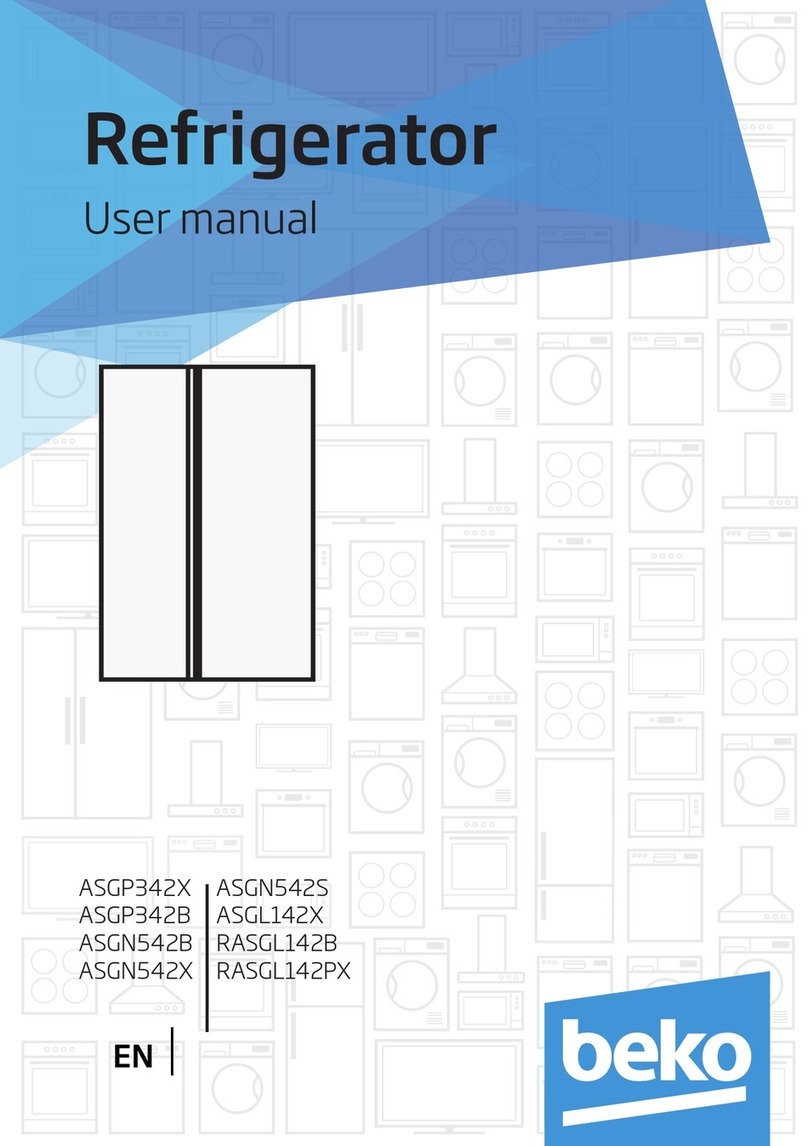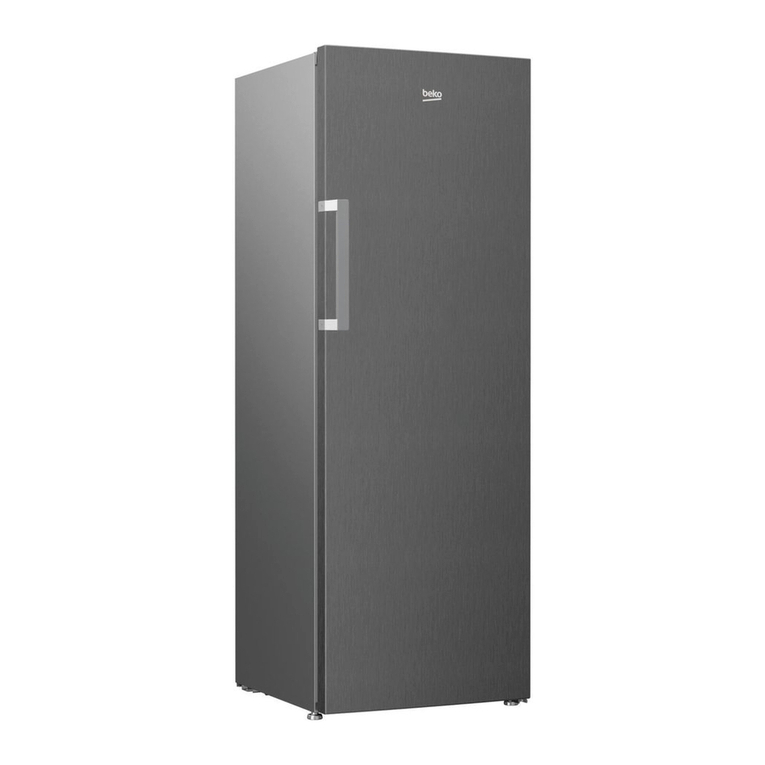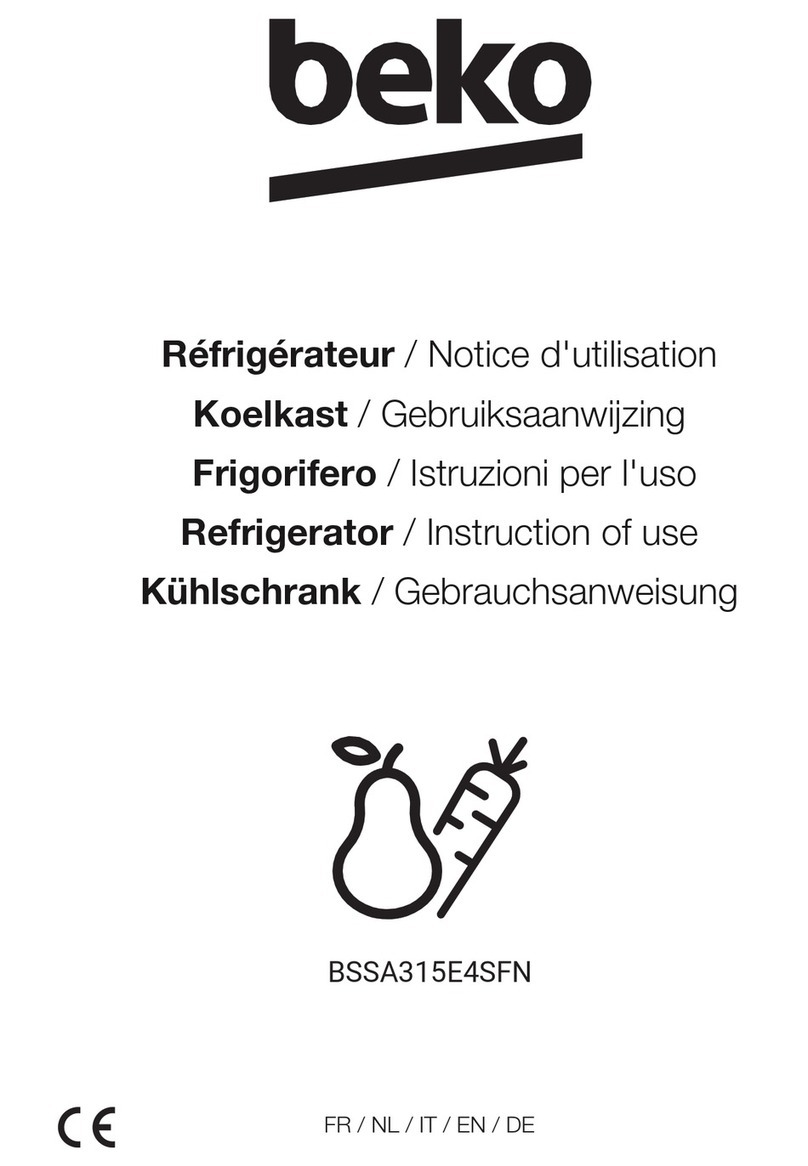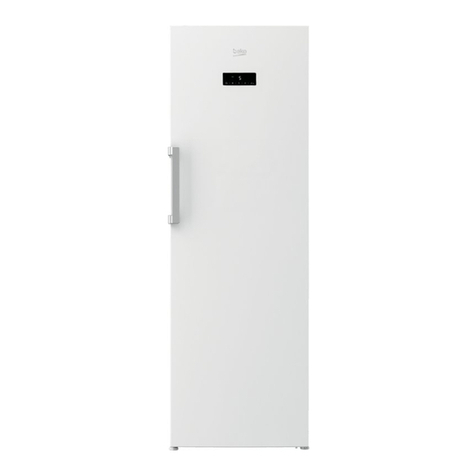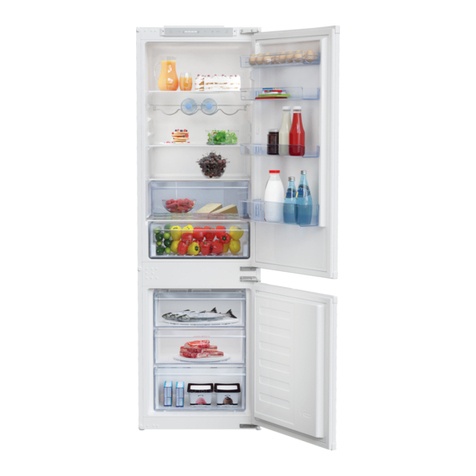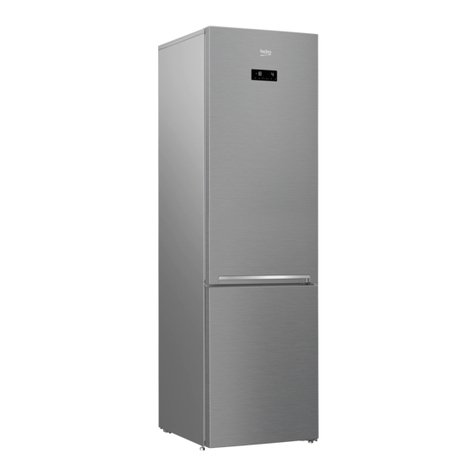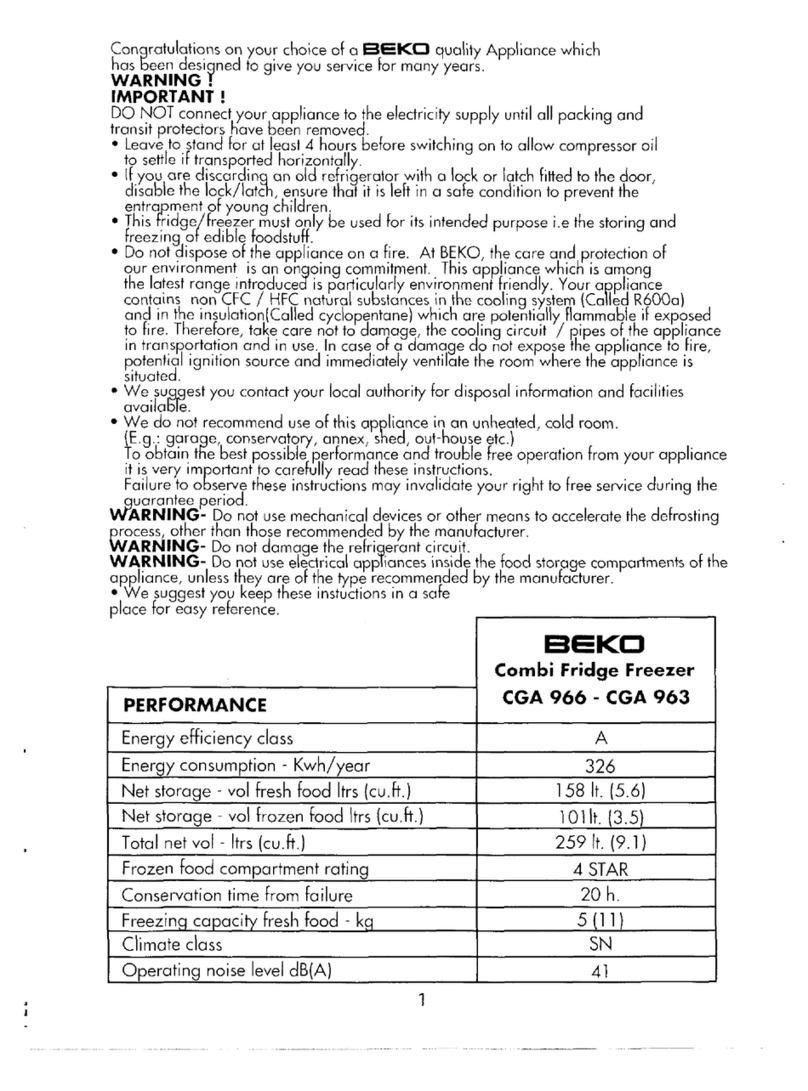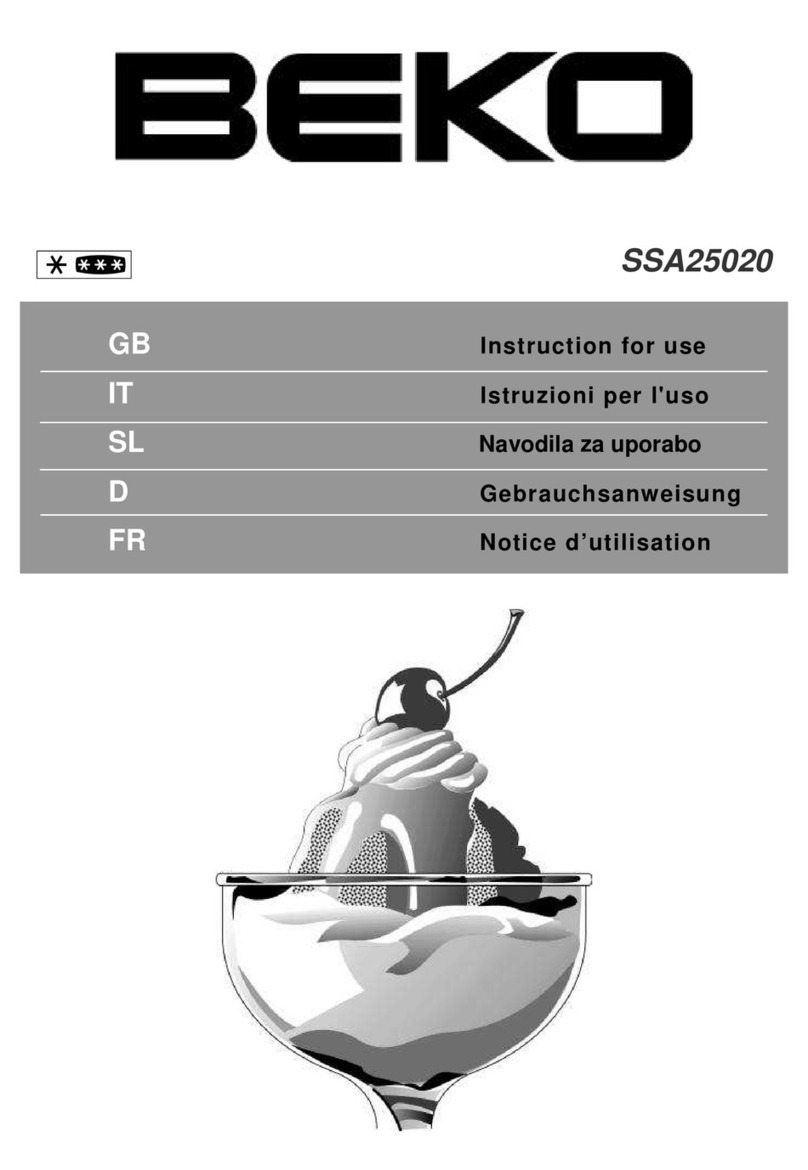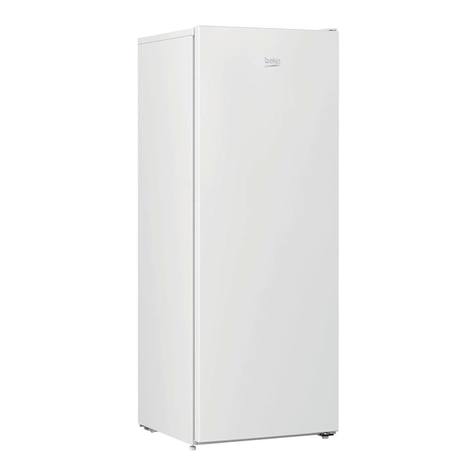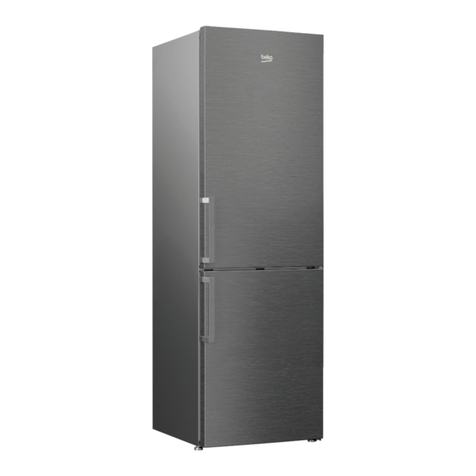
en en
Transport instructions
The appliance should be transported only in
an upright position.
The packing as supplied must be intact during
transportation.
After transportation in a horizontal position,
the appliance may only be operated after
standing upright for 4 hours.
The appliance must be protected against rain,
moisture and other atmospheric influences.
The manufacturer assumes no liability if safety
instructions are disregarded.
Disposal
Make the appliance unusable immediately.
Pull out the mains plug and cut the power
cable. Remove or destroy snap or latch locks
before disposing of the appliance. In this
manner you prevent children from locking
themselves in and endangering their lives.
Appliance setup
• Do not operate your appliance in a room
where the temperature is likely to fall below
10 °C at night and/or especially in winter. At
lower temperatures the appliance may not
operate, resulting in a reduction in the storage
life of the food.
• The climate class rate of your appliance is
given on the rating label located inside the
appliance. It specifies the appropriate operating
ambient temperatures as explained below.
Climatic class Ambient temperatures
SN.......................+10 °C to 32 °C
N .........................+16 °C to 32 °C
ST .......................+18 °C to 38 °C
T..........................+18 °C to 43 °C
SN-ST.................+10 °C to 38 °C
SN-T ...................+10 °C to 43 °C
Location
Only install the appliance in a dry room which
Is well ventilated.
Avoid direct sunlight or direct heat sources
such as a stove or a heater.
If this cannot be avoided, the following
minimum distances should be maintained:
Electric stoves: 3,00 cm
Heater: 3,00 cm
Cooling devices: 2,50 cm
• Ensure sufficient air circulation for your
appliance.
• Make sure that sufficient room is provided
around the appliance to ensure free air
circulation.
Fit the two plastic wall spacers supplied with
the appliance rotating 1/4 turn to the condenser
at the back of the appliance (Fig. 4).
• The appliance should be located on a smooth
surface. The two front feet can be adjusted as
required. To ensure that your appliance is
standing upright adjust the two front feet by
turning clockwise or counter-clockwise, until
the product is in firm contact with the floor.
Correct adjustment of feet avoids excessive
vibration and noise.
Electrical connections
Warning
This appliance must be grounded.
• Check whether the power type and voltage
in your region corresponds to the one stated
on the rating platel inside the appliance.
• The electrical safety of the appliance is only
assured when the grounding system in the
house is installed in accordance with
regulations.
• When installing the appliance, do not allow
it to stand on the power cable otherwise the
cable will be damaged.
• Ensure that the plug remains readily
accessible. Do not use a multiple adapter or
an extension cable.
• The electrical specifications of your appliance
is given on the rating label located inside the
appliance.
• Route power cable to allow easy connection
and disconnection after installation.
• A contact separator should be used if the
power cable is not accessible. (for built-in
models)
2
